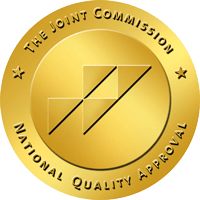In recent years, scientists have made new developments in addiction therapy. Naltrexone treatment is a kind of medication-assisted treatment. Now, naltrexone is a popular addition to rehab and detox programs throughout the country. Rehabs typically use this treatment for alcohol and opioid addictions.
What Is Naltrexone Treatment?
Like a Suboxone treatment program, a naltrexone treatment program works to help clients overcome their alcohol or opioid addiction. When someone suffers from alcohol abuse and takes naltrexone, a naltrexone shot works to remove the individual’s craving for alcohol. If someone takes naltrexone for opioids, it actually works to counteract the effect of painkillers on the brain.
Companies sell naltrexone under brand names like Depade, Revia and Vivitrol. While naltrexone treatment helps with addiction recovery, it does not treat withdrawal symptoms. This medication is extremely useful for relapse prevention because it reduces the person’s cravings for alcohol. By doing this, the medication can help someone stay sober while they detox.
For opiate drugs, a naltrexone shot actually blocks how the drug works in the brain. This happens because naltrexone is an opiate antagonist. It basically competes with drugs like heroin and cocaine in the mind. By using the opiate receptors first, naltrexone prevents someone from experiencing euphoria when they use opiates.
Naltrexone can sometimes cause side effects like headaches, tiredness, nausea or problems sleeping. Some individuals may also experience anxiety or dizziness. Since naltrexone blocks the effects of opiates, some people may also experience mild opiate withdrawal symptoms as well.
Getting Naltrexone in a Rehab Program
In rehab, a naltrexone shot is a common part of a medication-assisted treatment program (MAT). This kind of treatment program uses traditional therapies like psychotherapy and cognitive behavioral therapy (CBT) with medications like naltrexone. Unlike drugs like methadone, naltrexone does not have the potential for abuse. Instead, it helps to counteract opioid effects and reduce alcohol cravings.
For naltrexone treatment to work, clients have to use it consistently. Luckily, rehab centers can help by providing medical supervision and support. Often, the treatment center will also offer different therapies, counseling options, and relapse prevention techniques. People can get naltrexone treatment through an inpatient program or a transitional living program.
It is important to use a professional naltrexone treatment program at a rehab or a doctor’s office. One of the biggest risks of naltrexone involves overdoses. When someone takes naltrexone, they cannot achieve the same effects when they use opiates as well. Because of this, some people may overdose on opioids in an attempt to reach the same sense of euphoria.
To reduce overdose risks, it is important to get professional support during treatment. MAT programs are an extremely useful way to begin recovery, but clients need the right supervision and medical care. With the right support, naltrexone and similar medications can help clients become sober.
Discover Rehab Programs That Work for You
Whether someone wants naltrexone treatment or talk therapy, the right rehab program is out there. After calling the rehab center, clients can talk to an addiction specialist about their situation. This specialist can help them determine which programs will work the best. At the treatment center, clients can find help through options such as:
- Residential, transitional living and outpatient programs
- On-site detox
- LGBTQ affirmative therapy
- Family and marriage counseling
- Massage and acupuncture
- Recreational and art therapy
- Psychotherapy, individual therapy, and group therapy
You do not have to live with the guilt, pain, and stress of addiction forever. Through a naltrexone treatment program, addiction therapy and rehab, you can take the first step in overcoming your substance abuse disorder. To learn more about how Pillars Recovery can help you, call us today at 8667820247.
